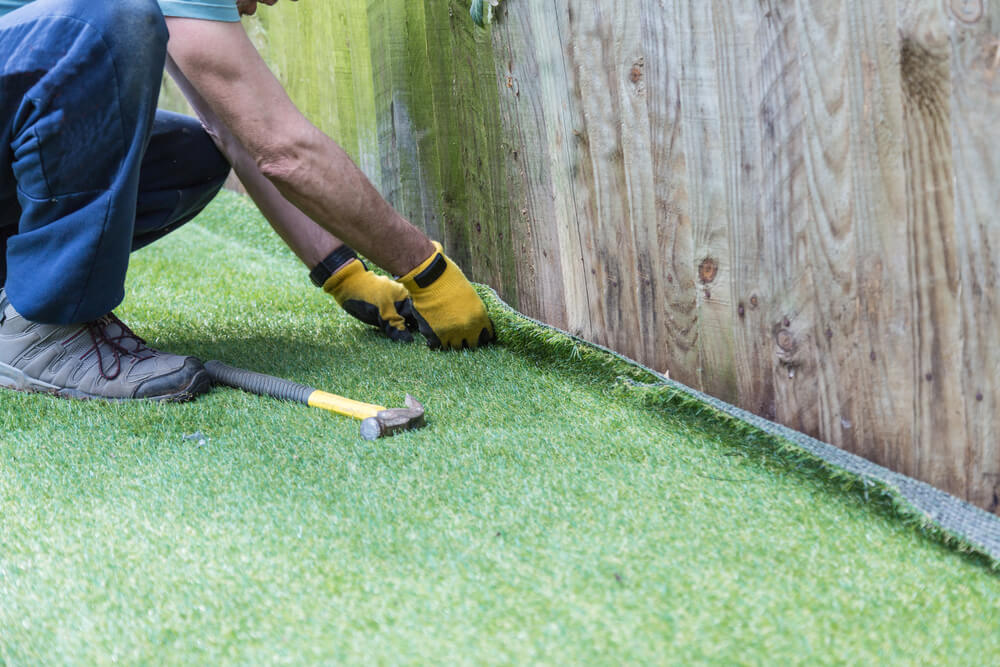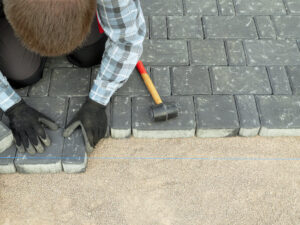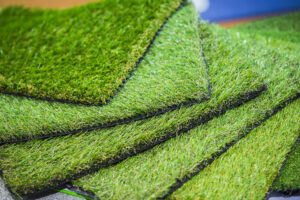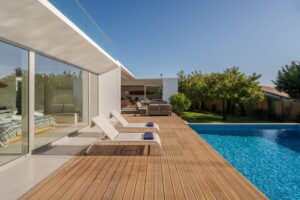Artificial grass or turf is an excellent alternative to regular grass for various reasons. Artificial grass requires hardly any maintenance. It doesn’t need to be lawned nor weeded, and all other unfavorable chores become nonexistent with turf. Homeowners can use that extra time for relaxation in their beautiful manicured lawn with friends or children.
Why Choose Turf?
Turf doesn’t need to be watered. Areas with drought do not need to worry about violating water restrictions from watering natural grass. Crabgrass or weeds don’t invade artificial grass. Synthetic grass only asks for a rinse from time to time to clear out dust and prevent odors.
In addition to not needing water, artificial grass also does not require direct sunlight. Natural grass often becomes patchy or dull in areas of shade. Resilient turf will keep its color and texture without water or sunlight.
Turf is safe for children and pets. Better yet, clothing or skin is not vulnerable to the messy grass or unsightly mud stains from natural grass. Heat-blocking turf is ideal for hot climates because it is temperature-controlled and will remain cool to the touch regardless of the weather.
Recreational areas do not fret. Turf can withstand high volumes of foot traffic or activity without wear or tear. The artificial grass can be easily cut into whatever shape or perimeter it needs to fill.
Still, are you not convinced of the benefits of artificial grass? The financial benefits may convince you. Synthetic grass is highly cost-effective. The initial cost seems expensive, but artificial grass is truly an investment. The long-lasting turf will save bucket loads of cash as the years go on.
You should start seeing savings soon as the next utility bill arrives. Turf can improve the value of your home for years.
How to Install Artificial Grass
Ok, so where to begin? Laying artificial grass is a relatively painless task. You can purchase fake grass from an outdoor supply company. Fake grass in Florida is available through Cricket Pavers. Artificial grass installation begins with some prep work.
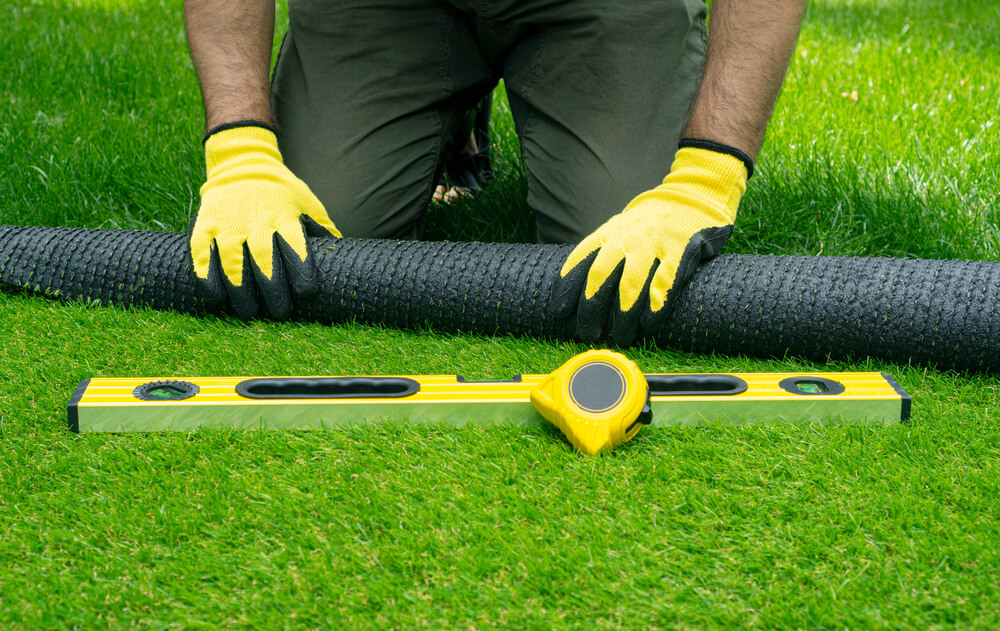
Prep Work
Are you installing synthetic grass on a dirt or soil surface? Underground hazards can be present on these surfaces. The risks can include water pipes, sprinklers, and electric lines. Don’t feel discouraged yet because these obstacles can be addressed.
Solve the sprinkler crisis by quickly covering the sprinklers at pipe level. Mark the areas of unused sprinklers to encourage smooth surfacing. Sometimes, you can remove sprinklers altogether. There is no need for utility racking sprinklers anymore. Think of the effort to remove sprinklers as a therapeutic way to say goodbye to high water bills.
Turf can damage electric wires. Minimize harm by securing the artificial turf’s edges down. Relocate the wires about 6 to 8 inches away from the synthetic grass perimeter. An option for relocation could be on the subgrade secured with u-nails.
Ground Preparation
After sprinklers and wires are attended to, it will be essential to remove unwanted weeds. It is also vital to kill grassroots, so the grass does not continue to attempt growing.
Spray the area that you plan to lay the artificial turf on with a trusted weed-killer. Thoroughly saturate your lawn. There should be no life on the property in which turf is supposed to be installed. Give the weed-killer about two weeks to fully disintegrate weeds.
Smooth That Surface!
Once the ground is prepped, it is time to make room for the new installation. Dig out about 3 to 4 inches of soil to make room for the thickness of the fake grass. Use a hand tamp to apply pressure to the new surface so it holds together. Or, walk over the new surface, so the loose soil undergoes the necessary pressure.
Synthetic grass drains very well if installed atop well-draining soil. If the soil surface has a flawed drainage system, an efficient one will need to be installed. However, if you live in a dry climate that experiences little rain, the turf can get away with drainage gaps around the perimeter.
Extra Efforts for the Best Result
The turf is technically ready to be installed; however, you can take extra steps to ensure the best results with synthetic grass. A bender board can be installed to serve a structural purpose. You can place the nail board to the perimeter of the designated turf area.
If gophers are a cause for concern, install a gopher wire to prevent them from burrowing through your manicured lawn. Slowly roll out the wire, making sure to apply u-shaped staples every few feet to prevent slippage. Use a wire cutter to trim the preventative measure down to the size of the designated turf area.
If weeds have been a significant problem for the lawn, you may consider a weed barrier. The fabric layer will increase the blockage of weed growth. A weed barrier can minimize the synthetic turf’s chance to bubble or buckle from weeds attempting to escape through this installation.
Layout Your Base
Now it is smooth sailing from here on out. Using a wheel barrel or shovel, apply ¾ inch of your sub-base material. Stone, gravel, crushed granite are all great options to improve drainage by absorbing water. Finally, firm up your base with about 15mm of sharp sand sprinkled atop the base.
Lightly water the area, firm up your base by compacting the stones with a plate tamper or compactor, and double-check the surface is level. Fill in any critical areas, and then the lawn is set for the artificial grass installation!

How to Lay Artificial Grass
Plan the placing by measuring where you plan to place the turf and cut it accordingly. It is best to roll out the turf on a separate flat surface for cutting, so the designated surface is not walked over.
Leave about a one-inch allowance for any miscalculations. Make sure the blades of grass on the turf will face the same way for a natural appearance.
After the turf is marked and cut, it is time to roll the turf out on the designated surface. Avoid dragging the turf to prevent damage to the smooth surface. Instead, hold its edges and wave lightly.
Place the mats as close together as possible and mark where they connect. Seam each piece together where they are marked. Lay the seam tape out along the perimeter of the turf and spread glue evenly over the tape.
Stitch over the seamed areas starting from the farthest end. Finally, apply pressure over the seamed areas to make sure it sticks.
Fake Grass in South Florida
Fake grass easy for artificial grass installation is available from Cricket Pavers located in South Florida! We have been in the business for over a decade and we have many successful projects under our name. Our team strives to meet your needs and expectations, and we use high-quality materials to ensure durability, longevity, and reliability of our work.
Are you going to try out turf on your lawn? We want to hear from you! Leave a comment below to share any other tips and tricks you may have for laying artificial grass! Share this article on social media with other homeowners considering an artificial grass installation.
